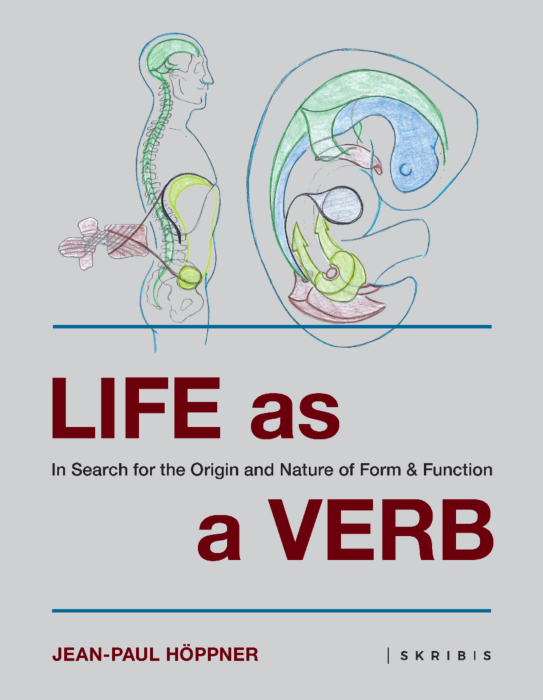This site uses cookies.
Life as a Verb
It was in 1977 that I discovered a completely new world in a biology class – a world hidden underneath the skin of a rabbit. It was a dissection class and we were encouraged to do the dissection ourselves, under the close supervision of the teacher. It was this activity that ignited a decisive spark and awoke my lifelong interest and fascination for nature and the complexity of life. After that experience, my teacher continued to provide me with as much material as she had available to find the answers to my new questions. Despite her best efforts I was never really satisfied. Consequently, on leaving school I began to study human anatomy in 1981-1982, spending my time between lectures, the library as well as the dissection room. I have never stopped to this day.
Trying to understand the relationship between ‘Structure’, ‘Form’, and ‘Function’, I studied anatomy in all of its finest details. But quite soon it became clear to me that this was still not enough and that I needed to extend my studies into the smaller biological dimensions. I studied histology, cytology and even (bio) chemistry but still noticed that certain questions kept coming back unanswered; mainly questions about the origin of anatomical structures. So I started to study embryology as well.
Unfortunately most authors approach embryology from the chemical (DNA) aspect. Consequently, my questions still remained unanswered, until a day in 1986 when I received the copy of a book. It was a book that explained the human development in a completely different way! Rather than the chemical parameters common to all embryology books that I had read to that point it described the embryological process in physical parameters; parameters such as spacetime, dimension, position, direction, etc. The book described in a complete and logical way ‘how’ and ‘why’ a form changes. These changes are described as developmental movements. Moreover, this concept demonstrated how it is possible to observe these movements as so-called morphokinetic patterns within each present anatomical form, even long after birth! By describing changes as developmental movements, by recognizing these movements in the form of a pattern, this is how anatomical pictures come alive. This concept, based on the ‘Principles of Nature’, made perfect sense to me. Finally, quite a lot of my questions became answered!
In this book we will study the ‘Principles’ behind the phenomenon of morphokinetic patterns. In doing so, we will go beyond the borders of human development and back to the origin of the concept of ‘Morphogenesis’. A profound insight into these ‘Principles’ is a solid foundation for an understanding of the relationship between ‘Structure’, ‘Form’, and ‘Function’ of the human as well as for all organisms.
This book is written for all of you who are fascinated by the beauty and complexity of the ‘Human Being’ and are trying to find answers about its origin. Within this book you can find hidden answers of ‘Nature’, simply by thinking-out-of-the-box. Let me take you on a journey of 13,8 billion years to discover a universal ‘Mechanism’. A ‘Mechanism’ that we can use every day again, in theory and practice.
| Sous-titre | In Search for the Origin and Nature of Form & Function |
|---|---|
| ISBN | 9789464445169 |
| Année | 2022 |
| NUR | 890 |
| Format | 200 x 260 mm |
| Nombre de pages | 480 p. |


